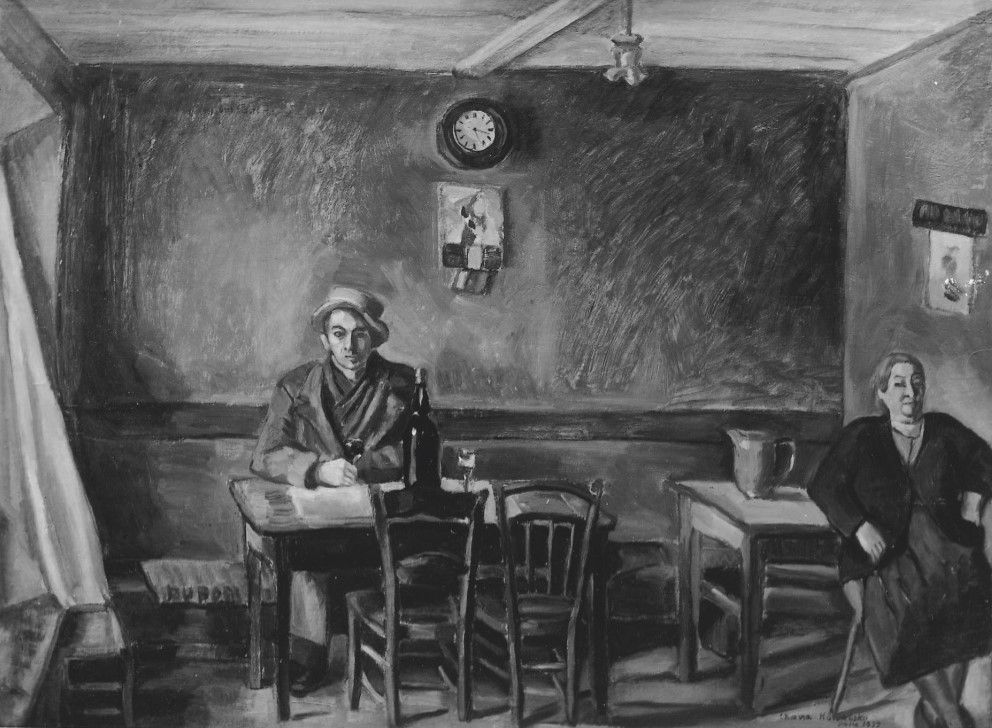Sigismond KOLOS-VARY
Январь 2, 2019Nathalie KRAEMER
Январь 3, 2019Хана Гитла КОВАЛЬСКА
ВЛОЦЛАВЕК (ПОЛЬША) 1907 – ДЕПОРТИРОВАНА В 1941 Г.
Ковальска выросла в религиозной семье. Её отец, раввин Ковальски, был одновременно чле- ном сионистского движения и сенатором. Личность отца сильно повлияла на художницу в детстве. Их дом был местом встреч. Писатель Шалом Аш написал своё первое произведение именно в доме Ковальски. Ковальска начала рисовать в возрасте 16 лет. В 1922 году уехала в Берлин изучать живопись. Познакомилась со своим будущим мужем, писателем и эссеистом Борушем Виногура. В Париже Ковальска поселилась на авеню Клиши в доме 171. У неё не было своей мастерской, и она была вынуждена работать у друзей. Была активным членом «Культур-Лиги» Парижа и коммунистических еврей- ских кружков. Также работала журналисткой: писала о живописи в Presse nouvelle и в Le Journal de Paris (газетах на идише). Была секретарём Ассоциации еврейских художников и скульпторов, а в 1937 году участвовала в Еврейском культурном конгрессе. Во времена оккупации вступила в ряды дви- жения Сопротивления. Была арестована гестапо и помещена в тюрьму Санте. Переведена в тюрьму Террель. В 1941 году они с мужем были депортирова- ны эшелоном №34. Убиты нацистами.
Stories of Jewish Artists of the School of Paris 1905-1939
FRENCH-ENGLISH
Capitale des arts, le Paris des années 1905-1939 attire les artistes du monde entier. De cette période de foisonnement, un terme est resté, celui d'Ecole de Paris, qui recouvre une grande diversité d'expression artistique. Dans ce brassage dont Montparnasse est le creuset, un groupe se distingue : celui des artistes juifs venus de Russie, de Pologne et d'Europe centrale. Si leurs styles sont variés, un destin commun les rassemble : ils fuient l'antisémitisme de leur pays d'origine. Certains ont connu la célébrité dès les années 1920, tels Soutine, Lipchitz ou Chagall. D'autres n'ont pas eu le temps ou la chance d'y accéder. Près de la moitié a péri dans les camps de concentration nazis.
From 1905 to 1939, Paris attracted artists from all over the globe as the capital of the art world. This period of artistic proliferation became known as the School of Paris, and includes a great diversity of artistic expression. Within the teeming art world centred on Montparnasse, one group set itself apart: Jewish artists from Russia, Poland, and Central Europe. Although their styles were diverse, they shared the common fate of fleeing anti-Semitic persecutions in their home countries. Some became famous in the 1920s, such as Soutine, Lipchitz, and Chagall, while others did not have the time or the luck to gain renown. Nearly half of these artists died in Nazi concentration camps.






